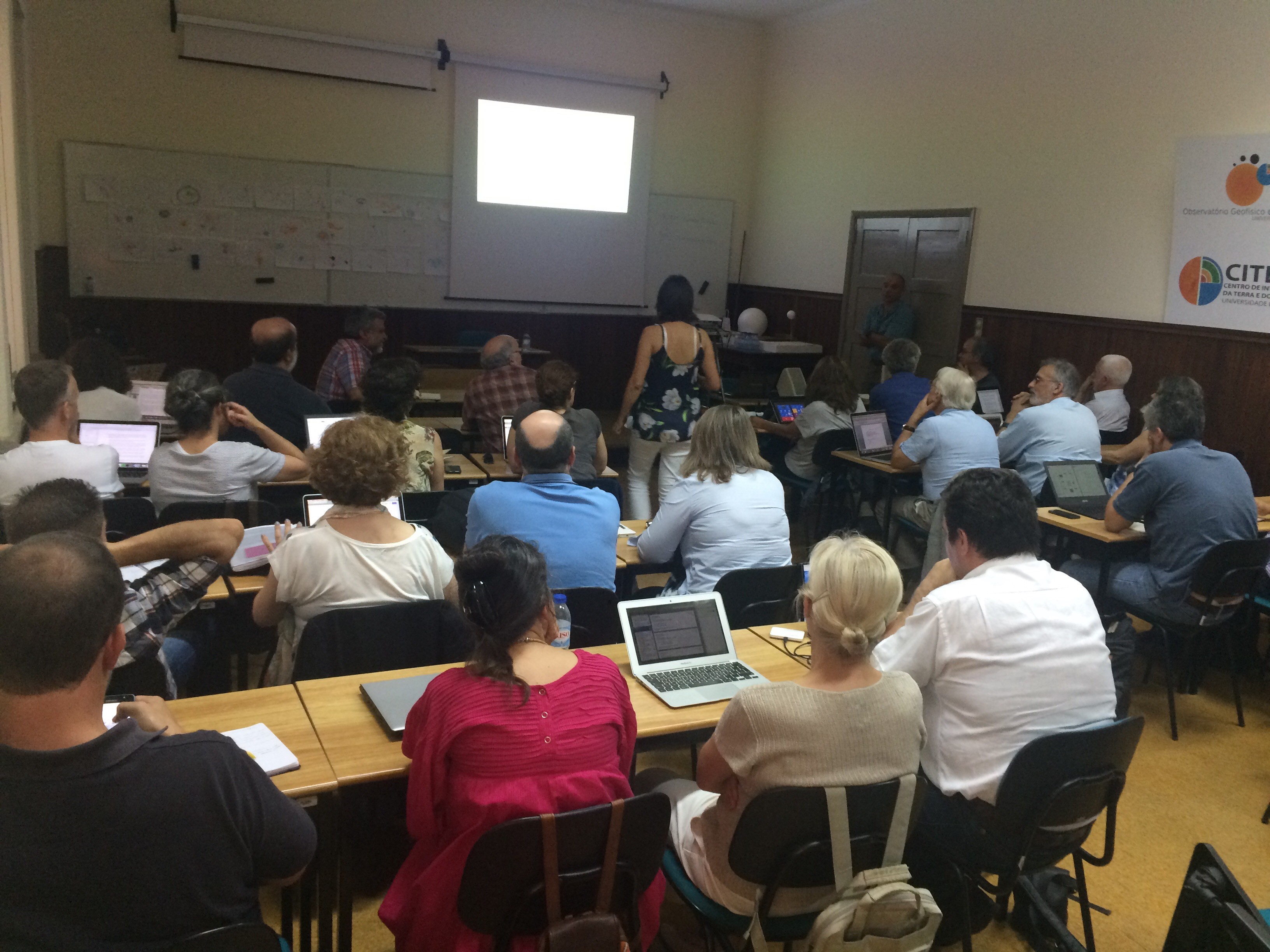On Wednesday (November 15th), the “C4G Executive Committee and Coordinating Council” meeting took place at Aveiro University Geosciences Department. The objective was to discuss some important questions such as electing the president for Coordinating Council and Executive Council for the Collaboratory for Geosciences (C4G), C4G business model, the importance of interaction between Researches Centers, the C4G´s engagement in Collaboratory Laboratories, favourable opinion on the inclusion of the RAEGE Association (Azores) as a member of the C4G (which is still dependent on formal approval) and approval of invitation to João Fonseca for C4G Technical Director.
Rui Fernandes was re-elected president of the Coordinating Council and, by inherence, president of the Executive Council. For the Executive Committee was elected the following members: Mário Gonçalves (vice-president), Rita Caldeira, Paul Crocker, Susana Custódio, António Fiúza, Fernando Rocha, Pedro Terrinha, e Machiel Bos (as proxy of the president).
As president for C4G, Rui Fernandes take the opportunity to thank Aveiro University members for the hospitality and “the soft eggs” (a Portuguese traditional dessert from that region).
C4G Technical Director – Concerning the points that had been discussed at the meeting, Rui Fernandes says that the invitation to João Fonseca for C4G Technical Director was approved through a Guest Scientist Exchange to be opened by UBI. “The UBI and the IPMA are also opening vacancies for the remaining members to be hired, although the current legislation creates some procedural difficulties”, states Fernandes.
Business model – The C4G president highlights the need to discuss the business model for C4G demands to ensure its sustainability in the medium and long term. “A laboratory form will be created and distributed. So, each of these units can describe in detail the access´s conditions to the resources available to C4G (both members and the community in general”, he announces.
Research Centers interaction – About the importance of interaction with Research Centers, especially now that the FCT includes the possibility of using their programmatic budget to support Portuguese participation in international infrastructures, Fernandes explains that this means for C4G the participation of Portugal in EPOS-ERIC, which is currently being discussed. “FCT has already assumed the payment of the quota in the first year but it will be necessary to guarantee the financing of the Portuguese quota in the following years”, warns.
Collaborative laboratories engagement – The C4G participation can be applied in many knowledge domains considering its community diversity and “because C4G is not a single entity”. So, it is up to the various institutions (and to individual researchers) acknowledge whether or not they participate and in which (once each researcher can participate in a single one). According to Rui Fernandes, the proposed model points to the creation of the Collaborative Laboratory through a company whose shareholders will be the institutions and preferably SMEs (small and medium-sized enterprises). “But the C4G can and should promote the creation of 1-2 LC, namely in risks and raw materials. In this sense, members of the C4G are already involved in promoting initiatives in these areas and the community will be informed in the future of the situation”, clarifies Fernandes.

